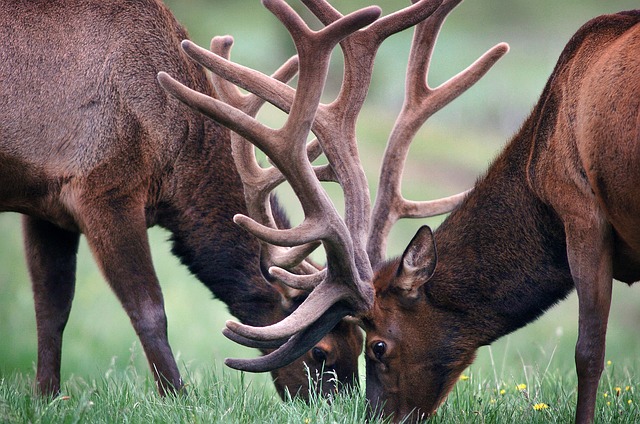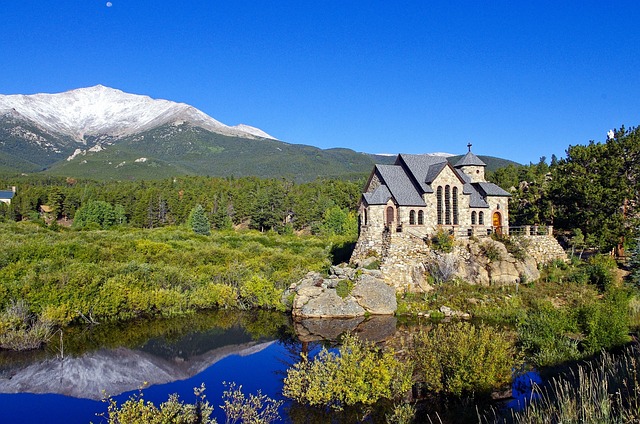Colorado, known as "The Mile High State," boasts a unique geographical diversity with its iconic Rocky Mountains and the historical Fossil Beds National Monument. The Rockies stretch across 600 miles, offering unparalleled outdoor activities like skiing and hiking, with natural beauty that includes pristine alpine lakes and breathtaking views. Colorado's elevation, which gives Denver its "Mile High" status, affects local experiences, from altitude-induced sensory changes to impacts on health and medication efficacy. The state's rich history is marked by the Gold Rush and a robust mining industry, influencing its cultural and economic development, with events like the National Western Stock Show showcasing its cowboy heritage. Colorado's ecosystems are a haven for biodiversity, hosting approximately 3,000 plant species and a variety of animal life, including large mammals and over 500 bird species, which contribute to the state's ecological stability and support sustainable practices. The state's dedication to environmental stewardship is evident in its efforts to preserve its natural resources and diverse wildlife, making it an essential destination for those who appreciate nature's splendor and a model for sustainable development.
Explore the Centennial State’s captivating tapestry, from its lofty peaks in the Rocky Mountains to the rich heritage etched into its plains. Known as the “Mile High State,” Colorado boasts a unique elevation that shapes both its geological wonders and the vibrant culture of its cities like Denver. Delve into the state’s gold rush past, cowboy culture, and the indelible mark left by mining. Witness the diverse flora and fauna, from alpine forests to arid deserts, that coexist in this geographically varied region, all contributing to Colorado’s remarkable environmental landscape. Join us as we uncover the fascinating facets of this American gem, Colorado.
- Colorado's Geological Wonders: From the Mighty Rockies to the Ancient Cliffs of the Fossil Beds National Monument
- The Mile High State: Exploring Denver and Its Unique Elevation
- Colorado's Rich History: Gold Rush, Cowboy Culture, and the Legacy of Mining
- Flora and Fauna Diversity: Colorado's Unique Plant and Animal Species and their Impact on the Environment
Colorado's Geological Wonders: From the Mighty Rockies to the Ancient Cliffs of the Fossil Beds National Monument

Colorado’s geological wonders span a diverse array of natural phenomena, each offering a unique window into Earth’s dynamic history. At the heart of this geological grandeur lies the Mighty Rockies, a mountain range that not only carves the state’s eastern border but also showcases some of the most breathtaking peaks and alpine lakes in the nation. The Rockies, spanning over 600 miles, are a playground for outdoor enthusiasts, offering opportunities for skiing, hiking, and wildlife observation. To the east, the state boasts another remarkable geological site: the Fossil Beds National Monument. This area preserves some of the richest evidence of prehistoric life on Earth, with fossils dating back over 50 million years. Visitors can walk through ancient landscapes, witnessing the remains of creatures that once roamed North America’s plains. Colorado’s geological diversity is a testament to the natural splendor and historical significance that awaits both the casual observer and the seasoned adventurer within its borders. The state’s landform range from the towering heights of the Rockies to the fossilized imprints of prehistory, making it an unparalleled destination for those captivated by the wonders of our planet.
The Mile High State: Exploring Denver and Its Unique Elevation

Colorado, a state in the United States, is affectionately known as the “Mile High State” due to its unique elevation. Denver, its capital and most populous city, sits exactly one mile above sea level, offering residents and visitors a distinctive experience of high-altitude living. This unusual elevation affects everything from the taste of beer to the efficacy of medications, making it a fascinating subject for exploration. The thin air at this altitude means that Denverites adapt to lower oxygen levels, which can lead to a range of physiological and perceptual changes. Visitors may notice a difference in their energy levels or experience minor altitude sickness symptoms upon arrival, as the body acclimates to the reduced pressure. The Mile High State’s elevation not only presents challenges but also offers opportunities for outdoor enthusiasts, with its stunning mountain ranges, numerous hiking trails, and world-class ski resorts all within a short drive from Denver. The state’s geography is a blend of high plains, alpine lushness, and arid deserts, providing a diverse array of landscapes that are as rich in beauty as they are in history. Colorado’s unique elevation is not just a quirk of its geography but a defining characteristic that shapes the lives of its inhabitants and the experiences of those who visit, making it an intriguing destination for both adventure seekers and casual travelers alike.
Colorado's Rich History: Gold Rush, Cowboy Culture, and the Legacy of Mining

Colorado’s storied past is a mosaic of adventure, resilience, and cultural tapestry that has shaped its identity over centuries. The state’s rich history is deeply intertwined with the Gold Rush of the 19th century, which brought waves of prospectors seeking their fortunes in the Rocky Mountains. Towns like Central City and Virginia City sprang up virtually overnight, transforming the landscape and the lives of those who settled there. The Pike’s Peak Gold Rush of 1858, in particular, marked a significant turning point, leading to Colorado’s statehood in 1876. This era not only altered the economic trajectory of the region but also left an indelible mark on the American West, with stories of fortunes made and lost becoming part of the legend of Colorado.
Beyond gold, Colorado’s cowboy culture embodies the rugged spirit of the American frontier. The state’s expansive plains and working cattle ranches have maintained a tradition of horsemanship, roping, and rodeo that is both authentic and vibrant. This culture extends to the annual National Western Stock Show and Rodeo in Denver, an event that draws cowboys and cowgirls from across the nation to compete and celebrate their way of life. The legacy of mining in Colorado also extends beyond gold, with significant silver, molybdenum, and more recently, oil and natural gas deposits contributing to the state’s economy. This enduring industry has been a cornerstone of Colorado’s development, influencing everything from its infrastructure to its political landscape, and remains a testament to the state’s resilient and diverse heritage.
Flora and Fauna Diversity: Colorado's Unique Plant and Animal Species and their Impact on the Environment

Colorado’s diverse landscapes, ranging from the Great Plains to the alpine tundra of the Rocky Mountains, support a rich tapestry of flora and fauna. Over 3,000 species of plants thrive across its five distinct ecological zones, each adapted to their specific environment. The state’s botanical diversity includes rare species such as the Colorado blue columbine, the state flower, which is known for its vibrant blue hues and is a key pollinator for certain local insects. The flora plays a critical role in maintaining soil integrity and water resources, while also providing habitat and food for a myriad of animal species.
Similarly, Colorado’s fauna boasts an impressive variety of wildlife, with over 600 vertebrate species. Iconic large mammals like the black bear, bighorn sheep, and elk coexist with lesser-known species such as the pika, a small, furry creature found in high alpine areas. These animals contribute to ecosystem health by supporting their predators, pollinating plants, and dispersing seeds. The state is also home to over 500 bird species, including the endangered whooping crane and the prephenic leaping mouse, which is endemic to the region. This biodiversity not only enriches Colorado’s natural heritage but also supports ecological balance, resilience, and the state’s economy through recreation, conservation efforts, and sustainable agriculture.
Colorado stands as a testament to nature’s grandeur and human history’s rich tapestry. From its iconic geological formations, like the Rocky Mountains and Fossil Beds National Monument, to the vibrant cityscapes of Denver at an elevated altitude, the state offers a unique blend of natural splendor and cultural depth. Delving into Colorado’s past, one uncovers stories of gold rushes, cowboy culture, and a legacy of mining that has shaped its identity. Furthermore, the state’s biodiversity is a living canvas, showcasing a variety of plant and animal species that contribute to the environmental mosaic. Each aspect of Colorado’s landscape enriches the visitor’s experience, offering a diverse array of adventures and insights for all who traverse its lands.
